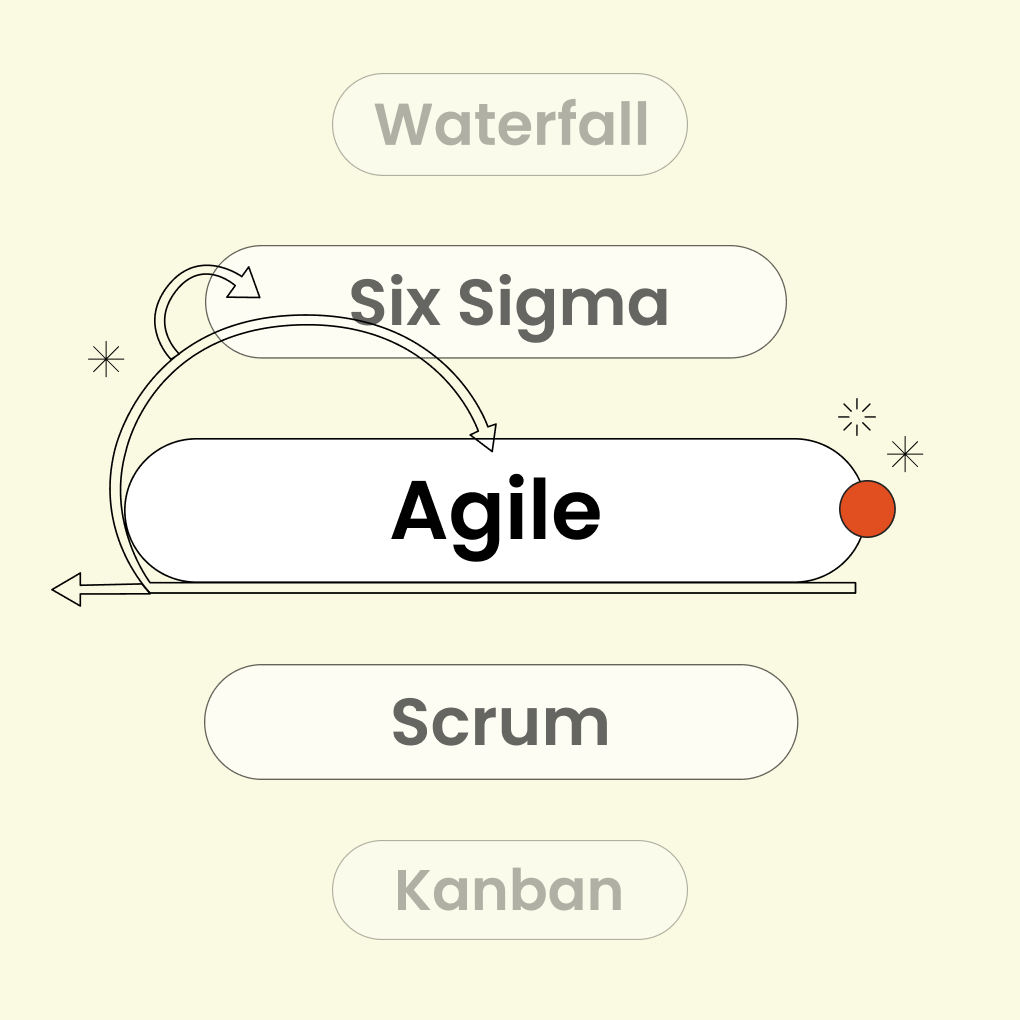Do you believe business plans are just formalities for large corporations? Think again. Many entrepreneurs overlook this vital step, thinking their idea alone will suffice. This shortcut can lead to significant challenges. A well-crafted business plan serves as your roadmap to success, helping you secure funding and establish a clear direction for your venture.
In this guide, you’ll learn:
- The definition of a business plan and its users
- The 10 essential types of business plans
- Key components of a strong business plan
- Tips for creating a successful plan
And when you’re ready to bring that plan to life, tools like Morningmate can help you organize your ideas, manage your team, and stay on track—from concept to execution.
What Is a Business Plan?
A business plan is more than just a formality; it’s a dynamic document that outlines your business concept and the steps to bring it to life. A well-structured business plan helps you define your company’s goals and map out how to achieve them. It encourages you to consider every detail, from your target market to your financial forecasts.
Purpose and Use Cases
Why is a business plan necessary? First and foremost, it’s crucial for securing funding. Investors want to see a solid business plan that demonstrates the viability of your idea. Without one, you’re essentially asking for money without a clear vision. Beyond funding, a strategic business plan guides your daily operations, helping you prioritize tasks, manage resources, and keep your team focused.
Who Uses Business Plans?
Business plans are utilized by everyone from new entrepreneurs to seasoned executives. Startups use a business plan to attract funding and outline their initial steps. Established companies may create a growth plan to strategize expansion or a strategic plan to redefine their direction.
10 Types of Business Plans
Just as there are various types of businesses, there are also different types of business plans. We’ll guide you through the ten most common, each serving a unique purpose to help you achieve your business objectives.
#1. Traditional Business Plan
The traditional business plan is the comprehensive document most people envision.
- It’s used to secure funding from banks or venture capitalists.
- It includes an executive summary, company description, detailed market analysis, and financial projections.
- This plan serves as a complete blueprint for both new and established businesses.
#2. Lean Startup Plan
A lean business plan is a more agile, streamlined version.
- It focuses on core elements: problem, solution, target market, and competitive advantage.
- Ideal for quick iterations, especially for new ventures.
#3. One-Page Business Plan
This plan condenses your entire business idea onto a single page.
- Perfect for quick pitches or sharing your strategy in just a few minutes.
- It highlights your company’s mission and key strategies.
- Use this to keep your core business concept clear and concise.
#4. Strategic Plan
A strategic plan outlines your company’s goals for the next 3-5 years.
- It defines your business vision and market positioning.
- This plan is essential for setting the long-term direction of any established business.
- It lays the groundwork for growth and overarching strategy.
#5. Operational Plan
The operations plan details your daily business activities.
- It outlines processes, responsibilities, and customer retention strategies.
- This includes production and manufacturing processes.
- It ensures everyone understands their role in achieving your company’s goals.
#6. Feasibility Plan
A feasibility business plan assesses the viability of a new business idea.
- It evaluates market, technical, and financial potential.
- This plan answers the critical question: Can we actually do this?
- It’s essential for avoiding costly mistakes before launching a new venture.
#7. Internal Business Plan
An internal business plan is designed for use within your organization.
- It often focuses on specific departments or projects.
- These plans aim to improve efficiency and manage teams effectively.
- Morningmate’s Workspaces can centralize these plans for seamless collaboration.
#8. Growth Business Plan
If you’re ready to scale, a growth business plan is your roadmap.
- It outlines how you’ll expand operations or enter new markets.
- It includes strategies for increasing sales and securing additional funding.
- We create these plans to drive significant business growth.
#9. Exit Plan
An exit plan details how owners will eventually leave the business.
- This could involve selling, transferring, or closing the business.
- It ensures a smooth transition and maximizes business value.
- Planning your exit strategy provides clarity and peace of mind.
#10. Expansion Plan
Similar to a growth plan, an expansion plan focuses on geographic growth or new product lines.
- It includes market research and necessary investments.
- This plan often features updated financial statements for the new venture.
- We develop these plans when we identify promising opportunities to broaden our reach.
Key Components of a Business Plan
Every business plan, regardless of its type, includes essential elements. Here’s a breakdown of the major sections you should incorporate. These components work together to create a cohesive narrative about your business.
1. Executive Summary
The executive summary is the first section, but you’ll likely write it last.
- It provides a brief overview of your entire business plan.
- Use an engaging format to capture the reader’s attention.
- Highlight your business concept, objectives, and reasons for anticipated success.
2. Company Description
This section introduces your business idea and its purpose.
- Describe your company’s mission, vision, and legal structure (e.g., limited liability company).
- Explain your industry, location, and the problems you aim to solve.
- This sets the foundation for your business model and identity.
3. Market Analysis
A thorough market analysis demonstrates your understanding of the industry.
- Conduct detailed market research to identify your target audience.
- Assess your competition and highlight industry trends.
- Outline your customer segments and your strategies for reaching them.
4. Organizational Structure
This section explains your business’s framework.
- Describe your legal structure and ownership.
- Detail your management team, their roles, and expertise.
- This shows who is in charge and their qualifications.
5. Product or Service Line
Here, you outline what you offer.
- Detail your products or services, including their features and benefits.
- Mention any intellectual property or unique aspects.
- Discuss the lifecycle of your product and future development plans.
6. Marketing and Sales Strategy
This section explains how you will attract and retain customers.
- Outline your marketing strategy, including branding and promotional efforts.
- Describe your sales process and pricing strategy.
- How will you deliver your products or services to your target market?
- A solid marketing plan is crucial for business growth.
7. Financial Projections
Your financial projections provide critical insights.
- Offer detailed forecasts for revenue, expenses, and profitability.
- Include cash flow statements, balance sheets, and income statements.
- These projections demonstrate the financial viability of your venture.
8. Funding Request
If you need funding, this is where you make your request.
- Clearly state the amount of funding you need and its intended use.
- Explain how you will utilize the funds and your repayment plan.
- Specify the type of funding you seek (e.g., equity or debt).
9. Appendix
The appendix contains supporting documents.
- Include résumés of your management team, permits, or licenses.
- Add contracts, letters of intent, or detailed market research.
- This section provides supplementary information without cluttering the main plan.
Concept Page in a Business Plan
Sometimes, a business plan features a “concept page.” This section differs from the executive summary as it focuses solely on the core idea. It aims to spark interest with a concise, compelling vision.
What It Is and Why It Matters
A concept page serves as a quick, impactful introduction to your business idea.
- It distills your entire business concept into a memorable format.
- Use it to capture immediate interest, especially when pitching to busy individuals.
- It sets the tone and encourages readers to explore the rest of your detailed business plan.
What to Include in a Concept Page
Keep your concept page focused and concise.
- The Big Problem: What specific issue do you solve for your target market?
- Your Unique Solution: How does your business idea address that problem?
- Key Differentiator: What makes your approach unique or superior?
- Your Vision: A brief statement of what your business aims to achieve.
Tips for Writing a Strong Business Plan
Writing a solid business plan requires careful thought, but it doesn’t have to be overwhelming. Here are some expert tips to enhance your plan.
Tailor to Your Audience
Always consider who will read your business plan.
- Are you addressing potential investors, a bank, or internal stakeholders?
- Adjust the level of detail and focus based on your audience’s needs.
- For investors, emphasize financial projections and ROI. For internal use, concentrate on operations and business goals.
Use Clear, Concise Language
Your business plan should be easy to read and understand.
- Avoid jargon unless necessary, and clarify complex terms.
- Use active voice and straightforward sentences.
- Get to the point quickly; don’t use ten words when five will suffice.
Avoid Common Mistakes
Steering clear of common pitfalls can save you time and frustration.
- Don’t make unrealistic financial projections without solid evidence.
- Avoid skipping essential market research or overlooking competition.
- Ensure your plan is neither too long nor too short for its purpose.
FAQs
What are the four main parts of a business plan?
While a business plan contains many sections, the four main parts typically include the executive summary, company description, market analysis, and financial projections. These key elements form the backbone of any solid plan.
What two items are described in a business plan?
A business plan outlines your core business concept and your overall company strategy. It details what you aim to achieve and how you plan to accomplish it, covering everything from your mission statement to your operational strategies.
What is the most important part of a business plan?
While all sections are important, the executive summary is arguably the most critical. It’s often the first (and sometimes only) section potential investors or partners read. It must be compelling and effectively summarize your entire business plan, whether you’re using a business plan template or crafting a lean startup business plan.
Ready to Plan Your Success with Morningmate?
Understanding the various types of business plans equips you with a powerful tool. You can now select the right approach for your business idea, whether you’re seeking funding or simply need a clearer path forward. A well-structured plan sets the stage for business growth.
Key Takeaways:
- A business plan is a roadmap, not just a document.
- Different plans serve different purposes, from lean startup plans to growth business plans.
- Every plan should include an executive summary, market analysis, and financial projections.
- Tailor your plan to your audience for maximum impact.
Morningmate helps bring your business plan to life. We provide the tools to organize your key elements, track progress, and keep your entire management team aligned, turning your vision into reality. Ready to create your winning plan?




